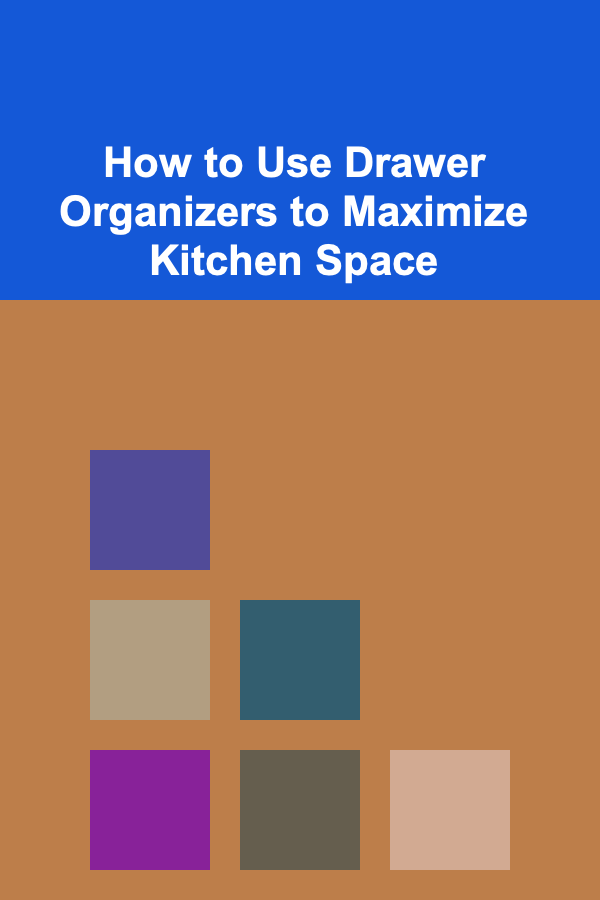
How to Store Your Exercise Equipment Without Taking Up Space
ebook include PDF & Audio bundle (Micro Guide)
$12.99$11.99
Limited Time Offer! Order within the next:

Storing exercise equipment efficiently is a common challenge for those who want to maintain an active lifestyle but are limited by space. Whether you live in a small apartment, a house with limited storage, or simply want to keep your living area organized, finding ways to store your workout gear without sacrificing valuable space is essential. In this article, we will explore various strategies and creative solutions to help you store your exercise equipment in a way that maximizes space and maintains a clutter-free environment.
Understanding the Importance of Efficient Storage
Before diving into specific storage solutions, it's important to understand why proper storage of exercise equipment is crucial. Here are several reasons:
1. Space Management
Efficient storage of exercise equipment allows you to maximize the available space in your home. This is particularly vital in smaller living environments where every square foot counts. By organizing your gear effectively, you can free up space for other activities, making your home more functional.
2. Convenience and Accessibility
When your workout gear is well-organized and easily accessible, it encourages regular exercise. If you have to dig through a pile of equipment to find what you need, you might be less likely to stick to your fitness routine. A well-organized space makes it easier to grab your equipment and get moving.
3. Safety
Properly storing exercise equipment reduces the risk of accidents and injuries. When equipment is left out or improperly stored, it can become a tripping hazard. Keeping everything in its designated place helps ensure a safe workout environment.
4. Preserving Equipment Longevity
When exercise equipment is stored correctly, it can extend its lifespan. Proper storage protects your gear from damage caused by environmental factors such as moisture, dust, or excessive heat, ensuring that it remains in good condition for future use.
Assessing Your Equipment and Storage Needs
Before implementing storage solutions, take inventory of the exercise equipment you own. This will help you determine the best storage methods based on the types and quantities of items you need to store. Here's how to assess your equipment:
1. List Your Equipment
Make a comprehensive list of all your exercise gear. Common items may include:
- Dumbbells
- Resistance bands
- Yoga mats
- Stability balls
- Kettlebells
- Foam rollers
- Jump ropes
- Exercise bikes or treadmills (if applicable)
- Weights or weight plates
2. Consider Frequency of Use
Evaluate how often you use each piece of equipment. Items that you use regularly should be stored in easily accessible locations, while less frequently used equipment can be stored in more compact or harder-to-reach spaces.
3. Space Availability
Assess the available storage space in your home. Look for underutilized areas such as closets, under beds, or in corners. Consider vertical space as well; utilizing walls can add significant storage options.
Creative Storage Solutions
Now that you have a clear understanding of your exercise equipment and storage needs, let's explore some creative storage solutions that maximize space while keeping your workout gear organized.
1. Utilize Vertical Space
Vertical storage is one of the most effective ways to save floor space. Here are some ideas to utilize vertical space:
Wall-Mounted Racks
Installing wall-mounted racks or shelves is a great way to keep your equipment off the floor. You can find racks designed specifically for items like dumbbells, kettlebells, or resistance bands. These racks can be mounted at various heights to accommodate different equipment sizes.
Pegboards
A pegboard can be an excellent solution for organizing smaller items like resistance bands, jump ropes, or yoga straps. By hanging these items on a pegboard, you can create a visually appealing display while keeping your equipment easily accessible.
Hooks and Hangers
Use hooks to hang heavier items like bikes, jump ropes, or yoga mats. Ceiling-mounted hooks can also be used for larger equipment, freeing up valuable floor space.
2. Under-Bed Storage
If you have limited closet space, consider under-bed storage. Many storage containers are designed to slide under the bed, providing an excellent place to store items you don't need immediate access to.
Storage Bins
Invest in low-profile storage bins that can hold smaller equipment like resistance bands, yoga blocks, or foam rollers. Label the bins for easy identification.
Rolling Drawers
Consider using rolling drawers that fit under your bed. These drawers can store heavier items like kettlebells or dumbbells, allowing for easy access when needed.
3. Multi-Functional Furniture
Incorporating multi-functional furniture into your space can serve both storage and aesthetic purposes.
Ottoman Storage
Ottomans with built-in storage compartments can be used to store smaller exercise equipment. They can double as seating or a footrest, making them a versatile addition to your living space.
Coffee Tables with Storage
Similarly, coffee tables that feature hidden storage can be used to store weights or mats, keeping your living area tidy while still being functional.
4. Closet Organization
Your closet can be a treasure trove for storing exercise equipment if organized effectively.
Shelving Units
Install shelving units in your closet to organize your equipment. Dedicate different shelves for different categories, such as weights, mats, and accessories.
Hanging Organizers
Consider using hanging organizers or shoe racks to store smaller items. These can be hung on the inside of closet doors and are perfect for holding resistance bands, jump ropes, or even yoga straps.
5. Portable Storage Solutions
For those who enjoy working out at home and then taking their gear to the gym or outdoors, portable storage solutions can be invaluable.
Gym Bags
Invest in a quality gym bag with multiple compartments for organization. Use it to store smaller items like resistance bands, jump ropes, and workout clothes, keeping everything in one place.
Rolling Carts
A rolling cart can be a flexible storage solution that can be moved around as needed. Use it to store equipment like weights or a foam roller, and easily roll it into your workout space when it's time to exercise.
6. The Ceiling
Don't overlook the ceiling as a potential storage area.
Ceiling-Mounted Racks
If your ceiling height allows, consider installing ceiling-mounted racks for larger items like kayaks or bikes. This solution keeps your equipment securely stored while freeing up valuable floor space.
7. Custom Built-In Solutions
If you have the budget and space, custom built-in storage can provide a tailored solution for your exercise equipment.
Built-In Cabinets
Consider having built-in cabinets designed to store your workout gear. These cabinets can be customized to fit your space and provide a sleek, organized look.
Niche Storage
If you have alcoves or unused wall space, consider creating a niche for storing your equipment. This can involve installing shelves or cabinets specifically for your gear.
8. Seasonal Rotation
If you have a variety of exercise equipment that you use seasonally, consider rotating items based on your current fitness regimen.
Seasonal Storage Bins
Label bins for different seasons or workout types (e.g., summer outdoor gear versus winter indoor equipment) and store them out of the way when not in use.
9. Minimalist Approach
Sometimes, less is more. Adopting a minimalist approach to your exercise equipment can simplify storage needs.
Evaluate Necessities
Regularly evaluate your equipment and determine what you truly need. If you haven't used something in months, consider donating or selling it. Fewer items mean easier storage and maintenance.
Maintaining Your Organized Space
Once you've successfully organized your exercise equipment, keeping it that way requires ongoing effort. Here are some tips for maintaining your organized space:
1. Develop a Routine
Establish a routine for checking and tidying up your storage space. Set aside a few minutes each week to ensure everything is in its designated place.
2. Reassess Regularly
As your fitness journey evolves, your storage needs may change. Reassess your equipment and storage solutions regularly to ensure they still meet your needs.
3. Educate Household Members
If you live with others, educate them on your organizational system. Encourage everyone to put things back in their designated spaces after use.
4. Keep It Visible
Whenever possible, keep your equipment visible. This not only reminds you to use it but also helps maintain organization. If items are hidden away, they are more likely to remain unused and disorganized.
5. Personalize Your Space
Finally, add personal touches to your workout area. Decorate your storage solutions or create a motivating display of your favorite workout gear. Personalization can inspire you to stay active and engaged with your fitness journey.
Conclusion
Finding effective ways to store your exercise equipment without taking up space is both a practical and rewarding endeavor. By utilizing vertical space, incorporating multi-functional furniture, and adopting creative storage solutions, you can create an organized environment that promotes an active lifestyle.
Remember to assess your equipment regularly, maintain your organized space, and embrace minimalism if needed. With these strategies in hand, you can enjoy a clutter-free home that encourages fitness and well-being, making it easier to incorporate exercise into your daily routine. So, go ahead and transform your space into a functional fitness haven!
Reading More From Our Other Websites
- [Home Budget Decorating 101] How to Find Budget-Friendly Decor Ideas for Your Dining Room
- [Scrapbooking Tip 101] The Theme‑Swap Challenge: Turn Everyday Moments Into Extraordinary Layouts
- [Home Staging 101] How to Stage a Dining Room: What Elements Create an Elegant and Inviting Atmosphere?
- [Home Holiday Decoration 101] How to Use Minimalist Decor for a Cozy Holiday Vibe
- [Personal Investment 101] How to Profit from Deep Learning Models in the Financial Market
- [Personal Investment 101] How to Make Money with AI and Deep Learning
- [Organization Tip 101] How to Use Drawer Dividers for Better Bathroom Storage
- [Home Cleaning 101] How to Tidy Your Home Quickly When Unexpected Guests Arrive
- [Home Rental Property 101] How to Set the Right Rent Price for Your Property
- [Metal Stamping Tip 101] Metal Stamping Materials Explained: Selecting the Best Alloy for Your Application

How to Clean Your Home When You Have Small Kids
Read More
How to Create the Perfect Ambience with Home Staging
Read More
How to Organize Your Craft Room with Reusable Containers
Read More
How to Organize Your Digital Life with Minimalism
Read More
How to Organize Your Favorite Recipes Using Technology
Read More
How to Use Drawer Organizers to Maximize Kitchen Space
Read MoreOther Products

How to Clean Your Home When You Have Small Kids
Read More
How to Create the Perfect Ambience with Home Staging
Read More
How to Organize Your Craft Room with Reusable Containers
Read More
How to Organize Your Digital Life with Minimalism
Read More
How to Organize Your Favorite Recipes Using Technology
Read More